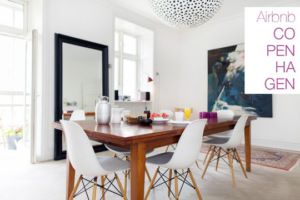News
Airbnb hugely popular in central Copenhagen
This article is more than 9 years old.
7 percent of the city centre has been leased out via Airbnb in the last year

Selling like hot cakes (photo: Airbnb)
The online rentals marketplace Airbnb has become a resounding success in central Copenhagen, according to new figures from the institute for economic research, Kraks Fond.
The figures reveal that 2.6 percent of all housing in Copenhagen is listed on Airbnb, and that figures rises to 7 percent in the city centre.
The number of addresses listed in the Danish capital is roughly on a par with much larger European cities such as Barcelona and Berlin. Taking its relatively small size into consideration therefore, Airbnb is significantly more popular in Copenhagen.
The average price in Copenhagen varies considerably depending on where you stay. In the city centre, a night will cost 1,137 kroner, while the price is almost half that, 574 kroner, for a night in outer-Nørrebro and Bispebjerg.
In October, Copenhagen Municipality told CPH POST that it wouldn’t try to regulate Airbnb, as Berlin and New York have done, until it can get an overview of how it affects housing prices in the city. The city mayor, Frank Jensen, contends that Airbnb is a good way for Copenhageners to get some supplemental income.
According to the figures from Kraks Fond, 45 percent of those who leased out their homes via Airbnb have done so more than ten times a year, but there are very few who do so more than 50 times per year.
Kraks Fond maintains this could indicate that using Airbnb as a professional leasing scheme is not a prevalent practice in Copenhagen.
READ MORE: Banning Airbnb: is Denmark’s capital considering similar action to the Big Apple?
On the brink of bursting?
In related news, a new report from Nykredit bank has revealed the value of Danish housing has reached its highest ever level.
The report showed that the value of Denmark’s housing in total, based on the average regional price per squared metre, was 3.142 trillion kroner – 26 billion kroner more than the previous record.
The previous record was set back in 2007, just before the housing market collapsed due to the onset of the financial crisis.










































